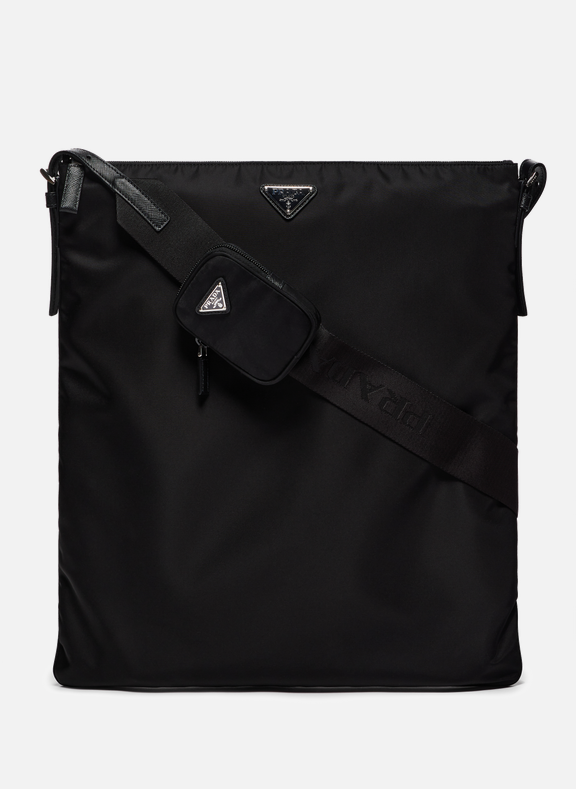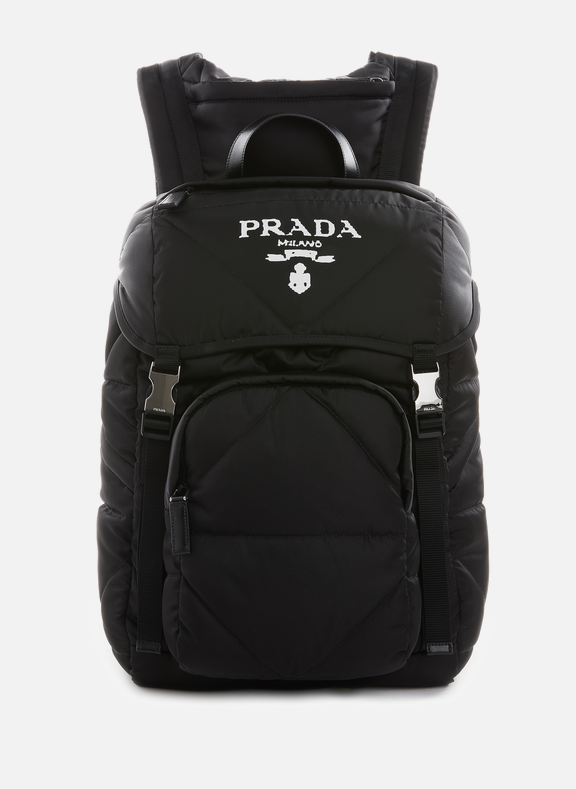-
NEWS
Prada and Nylon: A Tale of Style and Ecology
By Marine Poyer | February 9, 2022
An essential ingredient
Louis Vuitton's monogrammed canvas, Chanel's tweed, Courrège's PVC ? it
isn't rare for a brand to appropriate (or even update, as was the case for Burberry and gabardine) a
given material. At Prada, where Saffiano leather quickly became a trademark, nylon also lost no time
in securing its place as one of the label's favored textiles, thanks to Miuccia Prada.
In 1984, just six years after having taken up the brand founded by her grandfather Mario in
1913, the former Political Science student revisited the codes of her legacy. That year, she
introduced the Vela backpack, a chic and unexpected silhouette made of weather-resistant Pocone
nylon, with a satin finish and unparalleled lightness and flexibility. It was an aloof first
offering, but an event nonetheless. It would be followed four years later by Prada's first clothing
line, which also included several pieces in nylon. If some were skeptical ? this was a period in
which luxury was first and foremost the weight of leather and other fine materials ? Miuccia Prada
wasn't bothered. "All of a sudden, nylon seemed to me more interesting than luxe materials," she
would explain a few years later. "I decided to put it on the catwalk, and it challenged and even
changed traditional and conservative notions of luxury. I'm still obsessed with it." And she's not
the only one: today nylon is an essential textile at many a fashion house, no longer reserved for
accessories and employed instead in dresses, blouses, pants, skirts, and t-shirts. Intrinsically
linked to Prada's look, today it's one of its most recognizable signifiers. In other words, nylon
has become the basis of a wardrobe that's modern, cool, and more recently, eco-responsible.
From Nylon to Re-Nylon
If the allure of Prada's nylon pieces spoke for itself, their
environmental impact left something to be desired at a time when the fashion industry had come under
more scrutiny than ever before due to its environmental footprint. Like any self-respecting luxury
label, Prada did some soul-searching and returned with a greener conscience, promising to
progressively replace traditional nylon with Econym. Produced by Aquafil, this recycled fiber is
obtained from existing nylon deadstock as well as plastic waste collected from the world's oceans
and transformed, thanks to advances in eco-technologies. Plus, it can be recycled over and over
again, without degrading the fabric's quality. And the numbers back it up: 10,000 tons of Econyl
produced equals 70,000 barrels of petroleum saved.
Unveiled in 2019 and dubbed Prada Re-Nylon, the label's first line in the material comprised
six unisex pieces and hearkened to a more environmental future. "Our ultimate goal will be to
convert all Prada virgin nylon into Re-Nylon by the end of 2021," explained Lorenzo Bertelli,
Director of Sustainable Development and Social Responsibility at the Prada Group. "This project
highlights our continued efforts towards promoting a responsible business. This collection allows us
to make our contribution and create products without using new resources." But that's not all ?
thanks to the super-recyclable nature of Prada Re-Nylon, the commitment goes further than a business
trend. Prada backed this up last year: "This daring decision represents a new step in the way we
perceive luxury, as was Prada's first use of nylon. It permitted the invention of a luxury that was
modern and industrial, and Re-Nylon is its newest iteration. This line transforms more than just
production methods but also the final product, which itself is no longer final. Re-Nylon is more
than a luxury idea, it is an ideology ? at once sustainable and truly responsible."












